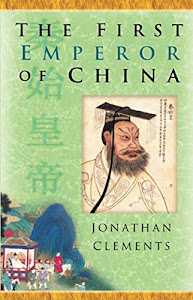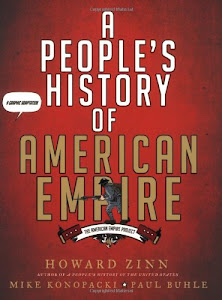
The First Emperor of China
Catégorie: Romance et littérature sentimentale, Religions et Spiritualités
Auteur: Trish Milburn, J. M. Roberts
Éditeur: Swami Satyananda Saraswati, Bruno Munari
Publié: 2017-05-01
Écrivain: Hugh Neill, Ray Dalio
Langue: Grec, Polonais, Roumain, Portugais, Hongrois
Format: eBook Kindle, pdf
Auteur: Trish Milburn, J. M. Roberts
Éditeur: Swami Satyananda Saraswati, Bruno Munari
Publié: 2017-05-01
Écrivain: Hugh Neill, Ray Dalio
Langue: Grec, Polonais, Roumain, Portugais, Hongrois
Format: eBook Kindle, pdf
Mausoleum of the First Qin Emperor - Wikipedia - The Mausoleum of the First Qin Emperor (Qin Shi Huang) (Chinese: 秦始皇陵; pinyin: Qínshǐhuáng Líng) is located in Lintong District, Xi'an, Shaanxi province of China. This mausoleum was constructed over 38 years, from 246 to 208 BC, and is situated underneath a 76-meter-tall tomb mound shaped like a truncated pyramid. The layout of the mausoleum is modeled on the Qin capital Xianyang
The Achievements and Faults of Qin Shihuang, The First - · Emperor Qin Shihuang. Before the early third century BC, what is now known as China was nothing but a number of warring states. In 221 BC, Qin Shihuang, king of Qin (from which the name of the country derives), united China and became the first emperor of China
Qin Shihuang (Shi Huangdi), Biography of China's First Emperor - · 'First Emperor of Qin', Qin Shihuang (259–210 BC),reunified China by conquering the other Warring States in 10 years. He then ruled the Qin Dynasty (221–206 BC) till his death with devastating purpose, completing the Great Wall and the Terracotta Army. His rule brought huge accomplishments and staggering wealth and power to his court, along with massive destruction, killing millions and
Qin Shi Huang Facts: 10 Things about the First Emperor of - Qin Shi Huang (259 – 210 BC), also known as Ying Zheng or Shi Huangdi, is the first emperor of China after unifying the vassal states. Throughout his legendary lifetime, Qin Shi Huang had accomplished many groundbreaking reforms and ordered the construction of some famous structures including the Great Wall and Lingqu after he died, his mausoleum housing the Terracotta Army once
History of Buddhism in China: The First Thousand Years - · Buddhism first reached China from India roughly 2,000 years ago during the Han Dynasty. It was probably introduced to China by Silk Road traders from the west in about the 1st century CE. Han Dynasty China was deeply Confucian. Confucianism is focused on ethics and maintaining harmony and social order in society. Buddhism, on the other hand, emphasized entering the monastic life to seek a
Terracotta Warriors | The first Qin emperor of China - Terracotta Warriors from the mausoleum of the first Qin emperor of China. This is the currently selected item. Terra cotta warriors from the Mausoleum of the First Qin Emperor (UNESCO/TBS) Funeral banner of Lady Dai (Xin Zhui) Longmen caves, Luoyang. Longmen Grottoes (UNESCO/NHK) Neo-Confucianism & Fan Kuan, Travelers by Streams and Mountains . The David Vases. The David Vases (Chinese
Biography of Qin Shi Huang, First Emperor of China - · Qin Shi Huang (around 259 BCE–September 10, 210 BCE) was the First Emperor of a unified China and founder of the Qin dynasty, who ruled from 246 BCE to 210 BCE. In his 35-year reign, he caused both rapid cultural and intellectual advancement and …
Biography for Kids: Emperor Qin Shi Huang - Best known for: First Emperor of China, established the Qin Dynasty; Biography: Early Life Prince Zheng was born in 259 BC. His father was king of the Qin state. At the time Zheng was born, China was divided up into 7 major states. These states fought each other all the time. Historians call this time in Chinese history the Warring States period. Qin Shi Huangdi by Unknown. Growing up as a
Burning the Books and Killing the ... - US-China Institute - · For centuries, the brutal and tyrannical reign of Qin Shihuangdi, First Emperor of China, was summed up by a four-character phrase, fenshu kengru, “He burned the books and buried the Confucian scholars alive.” This refers to two separate, largely unrelated, incidents that the historian Sima Qian tells us took place late in the reign of the First Emperor. He wove them into the historical
Emperor of China - Wikipedia - Emperor of China, or Huángdì, was the monarch of China during the imperial period of Chinese history. In traditional Chinese political theory, the emperor was considered the Son of Heaven and the autocrat of All under the Han dynasty, Confucianism replaced Legalism as the official political theory and succession theoretically followed agnatic primogeniture
[read], [goodreads], [audible], [english], [kindle], [epub], [pdf], [online], [free], [download], [audiobook]












0 komentar:
Posting Komentar
Catatan: Hanya anggota dari blog ini yang dapat mengirim komentar.